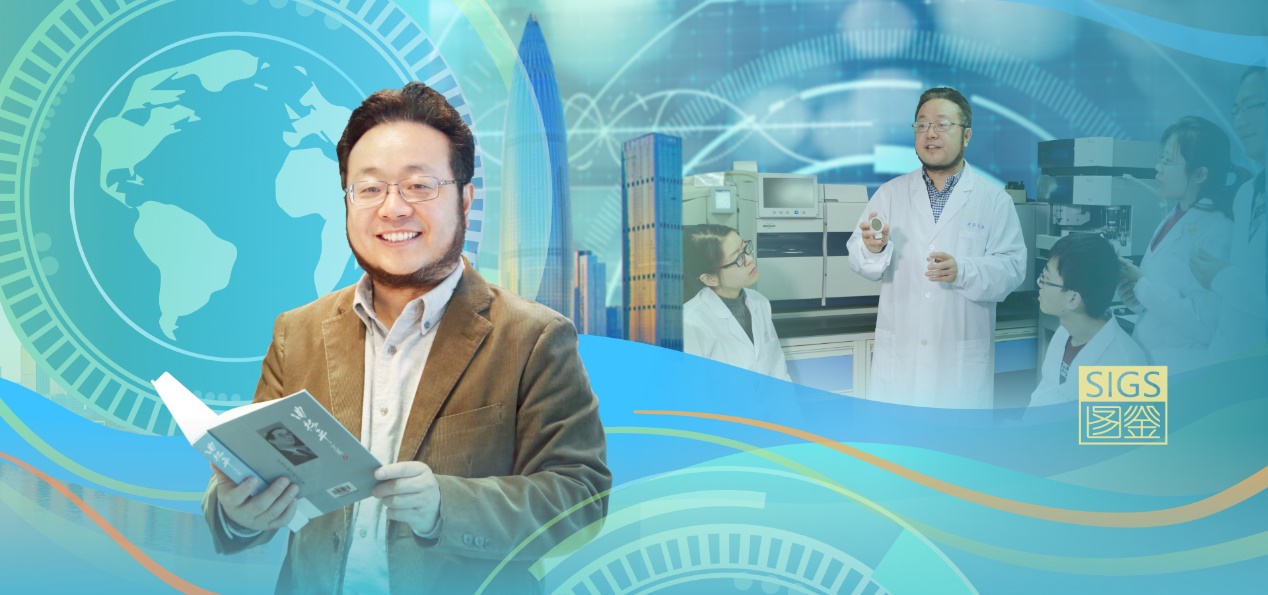
Academician He Kebin had on a warm and welcoming smile when we first met for the interview. As the Dean of the Institute of Environment and Ecology (iEE) at Tsinghua Shenzhen International Graduate School (Tsinghua SIGS), he gave off a strong sense of mission, belief, and responsibility as we talked about issues of ecological and environmental protection, discipline construction and talent cultivation.
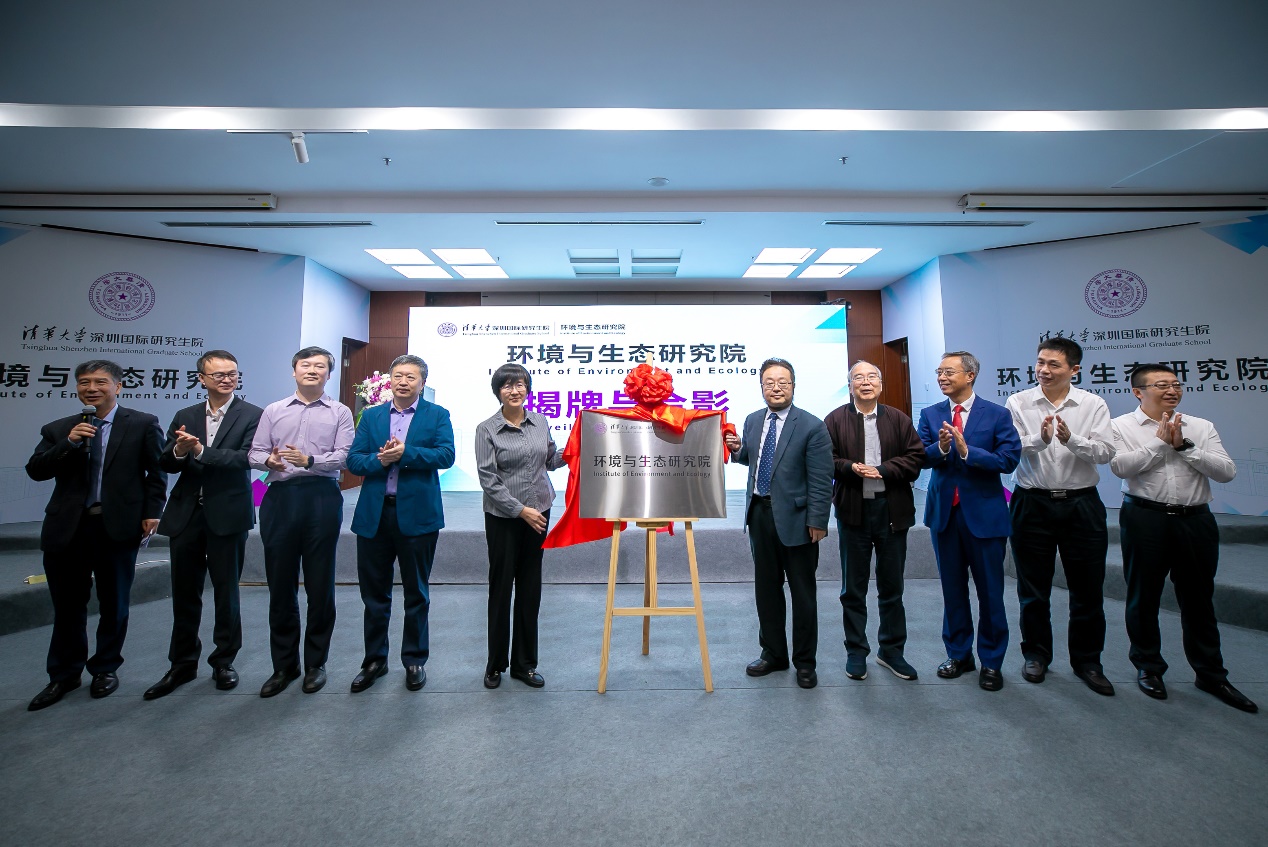
The Tsinghua SIGS iEE was officially established in October 2020. According to the core requirements of sustainable development and based on the forefront of international disciplines, the institute aims to study theories of ecological and environmental protection, investigate key technologies, and cultivate talents with global competence. What is the mission of the iEE and how does it integrate with the international community? How will it make use of resources from Tsinghua and Shenzhen to make an impact on global environmental protection, ecological civilization, and create a shared future for mankind? To answer these questions, we interviewed Prof. He to learn more about the iEE.
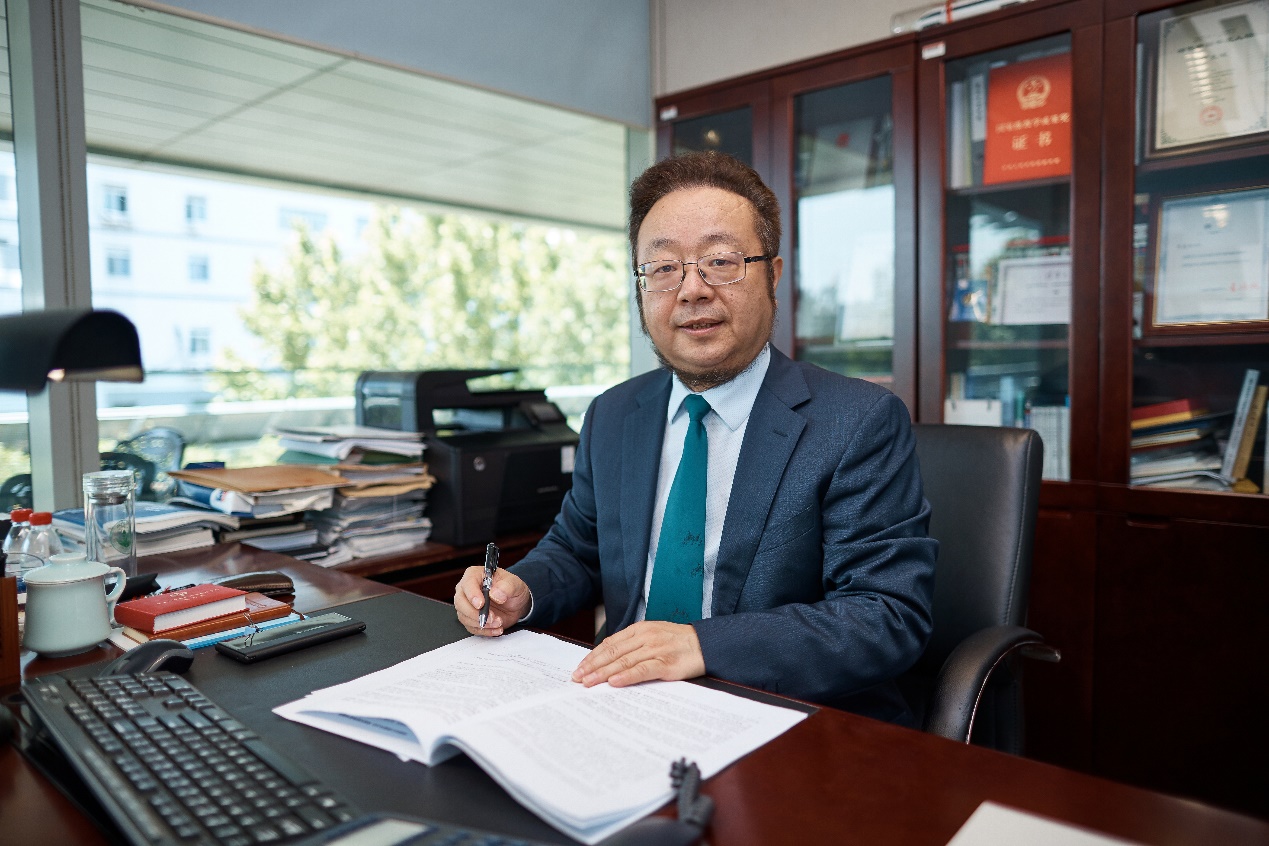
He Kebin is an academician of the Chinese Academy of Engineering, a professor at the School of Environment of Tsinghua University, and the Dean of the Tsinghua SIGS iEE. He received his bachelor's, master's, and doctoral degrees in Environmental Engineering from Tsinghua University, and won the National Science Fund for Distinguished Young Scholars from the National Natural Science Foundation of China as well as the honor of distinguished professor of the Changjiang Scholars Program. He leads the “Multi-medium Combined Pollution and Control Chemistry” and the "Regional Combined Air Pollution and Control” innovation team and holds additional positions such as Vice Chairman of the National Expert Committee on Ecological and Environmental Protection and Vice President of the Chinese Society for Environmental Sciences. Prof. He serves as Chairman for the Global Emissions InitiAtive (GEIA) Chinese working committee, leader of the Global Energy Assessment (GEA) environmental group, and a member of the International Council on Clean Transportation (ICCT).
Integrating traditional disciplines with unique characteristics of Shenzhen
What are the unique characteristics of the iEE compared to the environmental discipline at Tsinghua University?
Although iEE was set up less than a year ago, the environmental discipline enjoyed a long history in both Tsinghua University and Shenzhen. In 2010, the Graduate School at Shenzhen, Tsinghua University (predecessor of Tsinghua SIGS) set up the Division of Energy and Environment and the Energy and Environment Innovation Base based on the discipline layout of Tsinghua and industrial characteristics of Shenzhen. These bases were of great importance to Shenzhen’s new round of reform and opening up as well as scientific development. From a division to one of the "6+1" theme areas of Tsinghua SIGS, the growth of iEE is inseparable from the sustainable development goals of Shenzhen, the Greater Bay Area, China, and the world.
The environmental discipline at Tsinghua SIGS is complementary to that of Tsinghua University. In the past, environmental research at SIGS focused on water environment issues, but nowadays, its research areas have expanded to satisfy the needs of global sustainable development, national ecological civilization construction, high-quality development of the Greater Bay Area, and the socialist pilot demonstration zone in Shenzhen. Nowadays, iEE has set up six research fields according to the world's leading environmental and ecological sciences: Urban Environment and Compound Ecology, Industry and Special Environmental Protection, Land and Sea Interactive Environmental Protection, Regional Cross-media Complex Pollution and Environmental Health, Big Data and System Management of Ecological Environment, as well asClimate Change and Future Ecological Environment Protection. These six fields are based on the forefront of international disciplines, which not only inherit and carry forward the excellent discipline tradition of Tsinghua University, but also combine the characteristics of modern Shenzhen.
Moving forward with reform and innovation
The iEE aims to satisfy the needs of sustainable development of the Greater Bay Area and China. What are its missions and how does it realize interdisciplinary integration?
New developments have been made in the environmental discipline in both the domestic and international stages. There are new requirements for interdisciplinary integration and innovative development. A strong faculty team that is able to move forward with time, blaze new trails, and constantly broaden their academic horizons is needed. For universities with long histories, it might be a problem for them to innovate and for their faculties to explore new research directions. However, Tsinghua SIGS is inclusive and flexible in the selection of new teachers by adhering to the guideline of “International, Borderless, Entrepreneurial.” We are attempting to recruit more young scholars from the international community, thereby enhancing the faculty team of the Institute. For one thing, we should pay attention to the personal development of young faculty members, so that they would further improve themselves at Tsinghua SIGS and make breakthroughs in academic research.
On the other hand, we should not only introduce foreign cutting-edge technologies, but also learn to develop advanced instruments and platforms in our own country. Thanks to the reform and opening-up policy, the high-tech industry and the industrial chain are getting increasingly mature in Shenzhen and we have better environments for scientific research, innovation, and technological research and development. We should make great efforts to achieve more breakthroughs in technological research and development in Shenzhen - a pioneer city of reform and opening up, with the help of excellent foreign and domestic talents in Tsinghua. We will seize the opportunity to move forward and change our role from "introducer" to "inventor" and "creator".
From "participant" to "leader"
Bringing Tsinghua’s spirit and China’s voice to a global platform
What global opportunities does iEE offer and how does it integrate with the international community?
For the past few years, the Ministry of Education of the People's Republic of China has given great impetus to the construction of new engineering disciplines and the expansion of traditional research directions. For instance, a majority of new teaching staff come from European and American countries. Their previous academic research experience and achievements will accelerate the integration of Tsinghua Shenzhen International Graduate School with the international community. In the future, more courses will be established regarding the environmental discipline, and innovative contents will be integrated into the traditional environmental ecology research.
The Institute of Environment and Ecology attaches great importance to international cooperation and joint programs. Tsinghua University is extremely experienced in participating in international research projects, such as "Future Earth." Faculties from Tsinghua in Beijing bring excellent international training methods and experience to SIGS, actively creating new opportunities for students to experience an educational approach that incorporates more contemporary spirit and international characteristics.
At present, we are preparing to design and initiate more international research and cooperative programs, to become an "initiator" and "leader," rather than a "participant." Over the years, remarkable achievements made by the Tsinghua team in the "Blue Sky Protection Campaign" and in air quality improvement have been highly recognized by the international community. Presently, the Institute focuses on exploring new mechanisms of global cooperative projects, for example, a double master’s degree program with the University of Hanover and Kanazawa University, and an all-English program of green environmental infrastructure for countries along "Belt and Road". We hope that the environmental discipline team of SIGS will make the best of the extensive experience and insightful views to independently design and initiate more international programs. In addition, students will feel a favorable atmosphere and appreciate potential opportunities to adapt to the learning environment of the campus.
Educating Environmental Talents
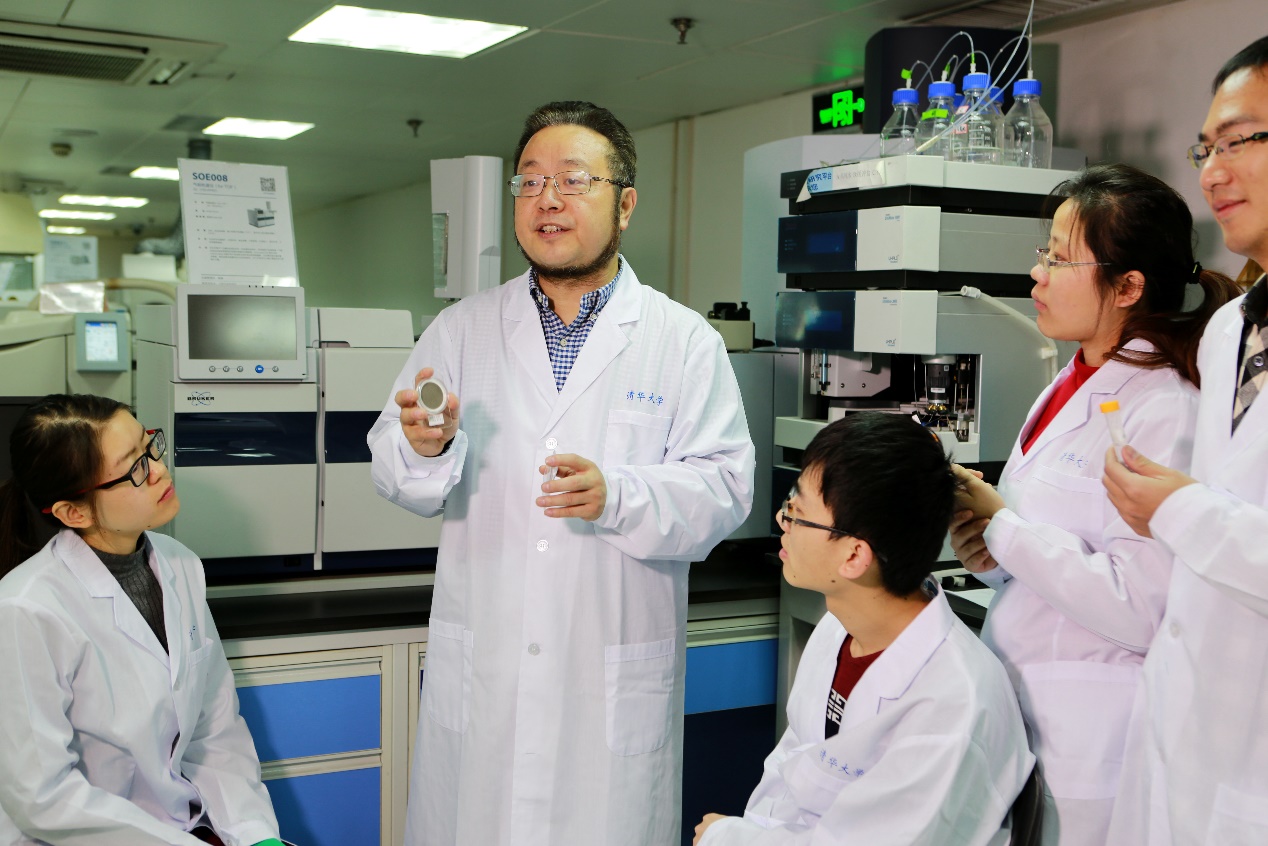
How will iEE train and educate its students?
Apart from the excellent teaching staff and advanced technology R&D, talent cultivation plays a key role in the development of a university. Students who engage in the research of environmental sciences shall have the sense of mission and responsibility for ecological and environmental issues in our daily lives. For example, the well-known PM2.5 is closely related to different kinds of industries and people’s daily lives. This shows that we have high requirements for the basic knowledge of students in environmental science. A seemingly simple problem about pollution source often involves many industries: students must not only know how to flexibly apply a systematic thinking framework to solve practical problems, but must also have an area of expertise and specialize in it.
The spirit of innovation is also an indispensable qualification for students. Society is rapidly changing, and socio-environmental problems and their corresponding solutions are always evolving. The textbooks I used as a student may not have much reference value for today's students. Therefore, whether or not students are successful is not measured by the amount of knowledge they have accumulated, but more by the methods they have used to study problems and even the means they have used to create knowledge for society. This is the core direction of our training.
I do not generally use the label of "successful people" to define students. What is "success"? I believe that "success" is not about how much fame and fortune one gets, but as long as one can make full use of what one has learned and make substantial contributions to the development of the country and the advancement of society, one is successful. Harvard University once conducted a survey on some successful people. Those people shared a similar quality that was not related to genetics but was often formed and cultivated. One of the common denominators is a clear goal. Many successful people have shown extraordinary ambition from a very young age and have set clear goals and strict requirements for themselves. A good environmentalist must see the connection between today's education, tomorrow's work, and the day after tomorrow's career, and use today's learning as a solid foundation for the future. Such students are often full of energy, and their contribution to the country and society will be more promising.
Forging a New Path in the New Era
How will iEE incorporate characteristics of Tsinghua and Shenzhen in making an impact on global environmental protection, ecological civilization, and create a shared future for mankind?
The development of higher education institutions and different disciplines are adapting to the development needs of China and the world. Current research on socio-economic and environmental issues are also problems that are encountered or will be encountered by other countries and regions. Hence, there will be new opportunities and challenges for iEE in the future.
We set strict requirements for our students, which stress the coexistence of striving spirit and innovation consciousness, integrated with the Shenzhen paradigm. It has been more than 40 years since the reform and opening-up policy was implemented. Shenzhen is a model city, which bears hardship and seeks innovation. The experiences of the Shenzhen Special Economic Zone are good learning materials for our students. Our students can acquire theoretical knowledge from the development and growth of Shenzhen and learn about integrations with industrial development. Various fast-growing enterprises in Shenzhen provide a wide range of practice platforms and learning opportunities. At the same, it is also hoped that students would communicate with alumni through SIGS to learn about their struggles, receive insights from them, and feel the pioneer spirit and responsibility as members of the Shenzhen Special Economic Zone.
If Tsinghua University is compared to a vessel, Tsinghua Shenzhen International Graduate School is a boat sailing in front of the vessel. In the process of school management, it carries forward the unique spirit of the Shenzhen Special Economic Zone, promoting innovative teaching and scientific research, and paving a new road by virtue of "breakthrough," "innovation," and "action." What needs to be emphasized is that "trial and error" is not a negative concept. On the contrary, it is integrated with creation experience, and is one of the basic qualities of realizing innovative breakthroughs in aspects of teaching team recruitment and talent cultivation, as mentioned above.
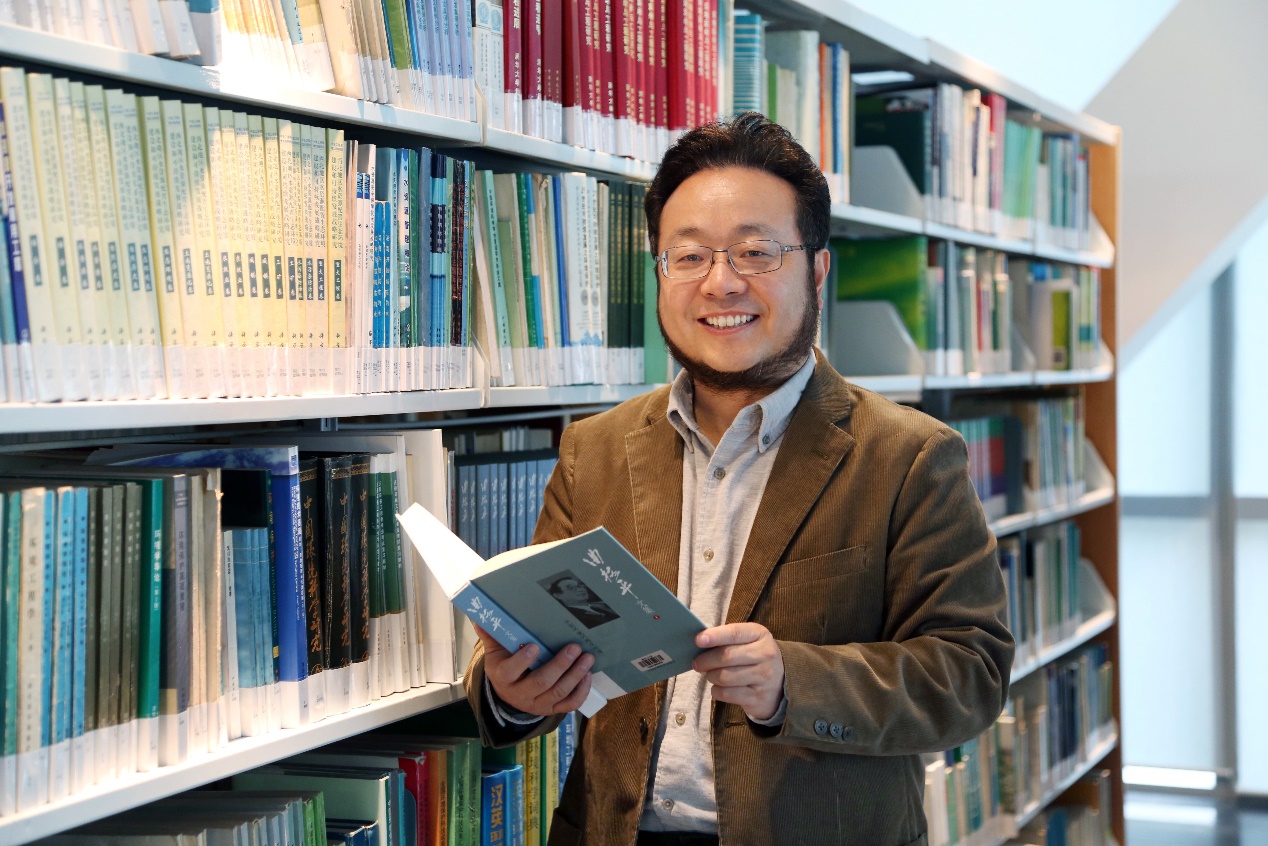
As we celebrate the 110th anniversary of Tsinghua University and the 20th anniversary of Tsinghua SIGS this year, could you please talk about your hopes for Tsinghua, SIGS and iEE?
On April 19th, General Secretary Xi Jinping visited Tsinghua University and pointed out that Chinese education is capable of cultivating outstanding talents and that we should have full confidence, broaden our visions, and incorporate things of diverse nature to improve education. I was deeply impressed by these words. They were the prospects and requirements of President Xi for Tsinghua University and even the Chinese education system. In the future, we will continue to make efforts to facilitate the dual landing of scientific research results and talents, dedicate ourselves to promoting the construction of the Institute of Environment and Ecology, train more high-quality talents, and contribute to Tsinghua's strength for global sustainable development and the construction of ecological civilization.
Text: Karen Lee
Editing: Sunny Xi
Cover Design: Wu Yutao


